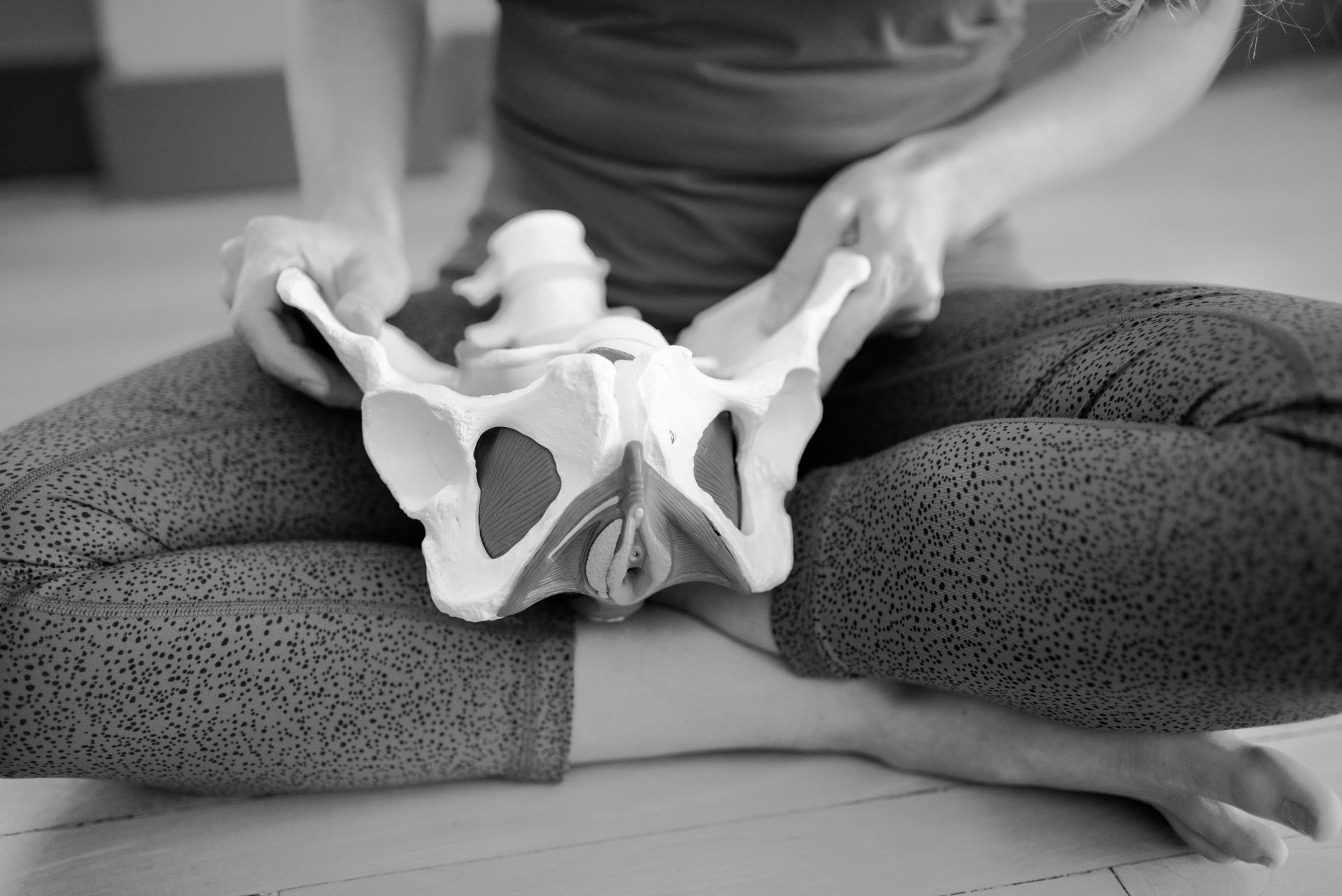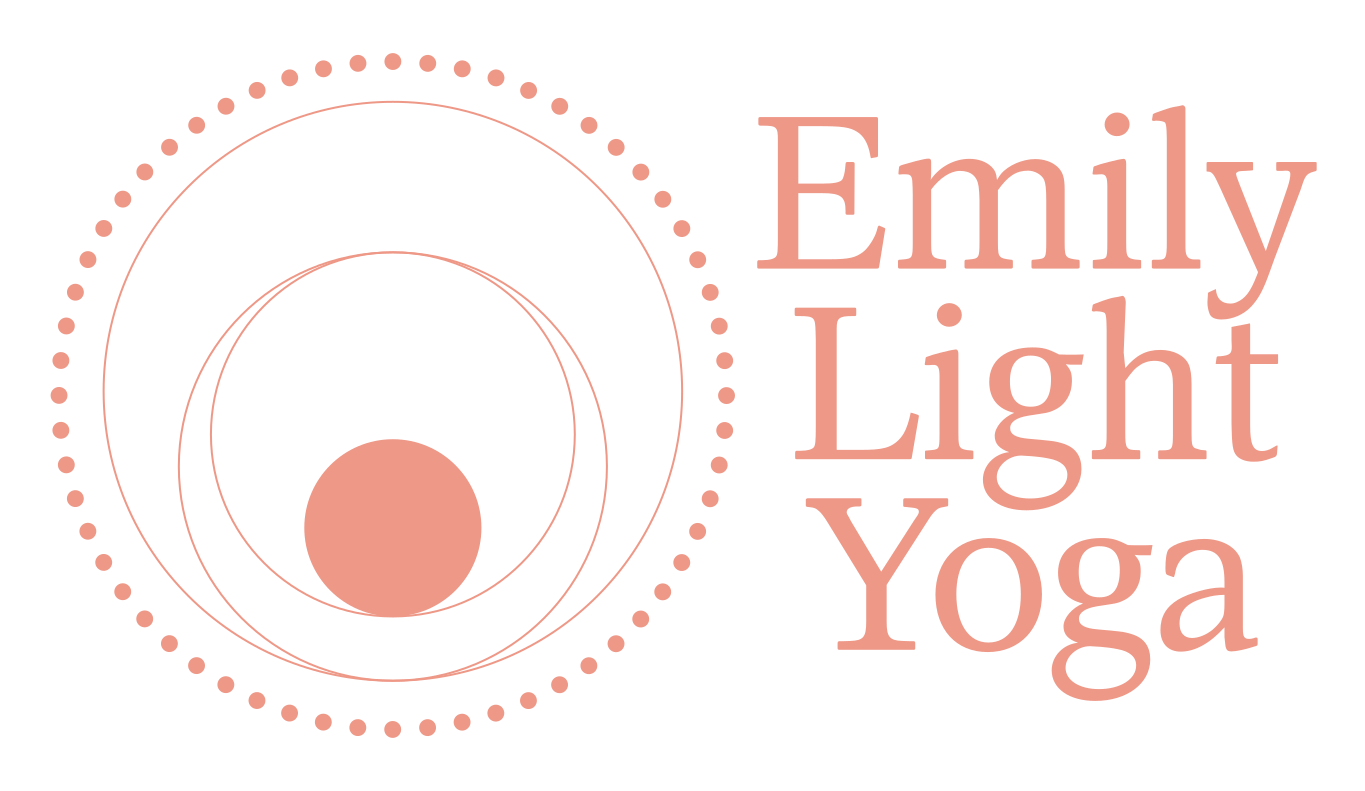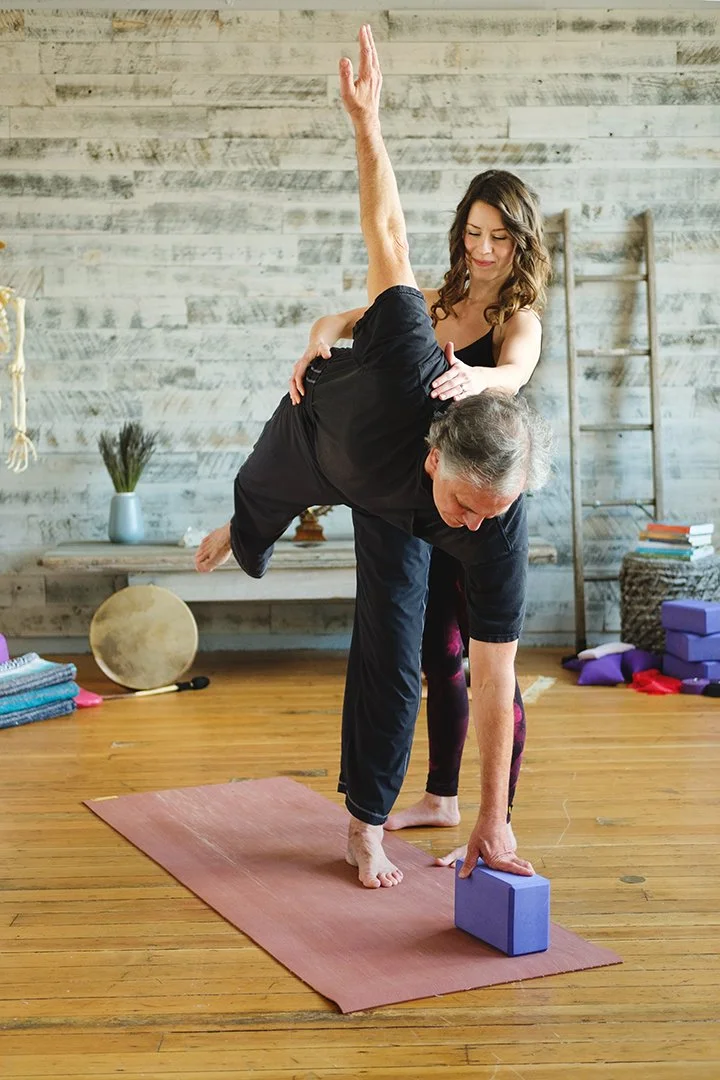
Yoga for Pelvic Floor Health
What is pelvic floor yoga therapy?
Pelvic health isn’t only for those who become pregnant or have low back or hip pain. Everyone has a pelvis! The bones, muscles and connective tissues of the pelvic girdle play so many vital roles in our health and lives.
Pelvic floor yoga therapy assists the muscles and physiology involved in:
Breathing
Circulation - our “sump pump” for lymph and other fluids
Continence (urinary and fecal)
Core strength
Digestion and Elimination
Immune function
Nervous system function and Pain
Sexual health
Yoga for Pelvic Floor Health takes into account all of these these systems and functions, creating a truly whole-person approach in regaining optimal pelvic function and wellness.
“I just completed the Pelvic Health Series: 2 classes/week for 9 weeks. I am noticing increased orgasm intensity, consciousness of pelvic respiration, relaxation of pelvic muscles resulting in dramatic decrease in urinary incontinence with sneezing, laughter or coughing, as well as the overall ability to relax my entire being when I am stressed.”
Pelvic floor yoga poses & Yoga Therapy
The health of our pelvic floor influences our core strength. And, just like any other muscle of the body, the strength and length of the muscles of the pelvic floor can get out of balance. There are times we need to stretch the hamstrings, and there are times we need to stretch a tight pelvic floor…
Yes! You heard me right. A quick (or exhaustive) search online for pelvic floor health brings you to the land of Kegels and all things pelvic strengthening. Sometimes strengthening is exactly what the body needs to return to balance. And sometimes it’s not… sometimes Kegels can even make things worse. I’ve seen it over and over again. Trying to figure out how to support your pelvic floor can be confusing with so much varying advice out there.
As a Yoga Therapist, this is one of my areas of expertise. I have invested many, many years in yoga therapy education, and pelvic health, prenatal and postpartum yoga therapy training. I’m an active member in professional networks of local and international pelvic health physical therapists and other pelvic health practitioners. I take continuing education trainings and courses from pelvic health professionals from around the world. I’ve personally worked with hundreds of pelvic health yoga clients and countless pelvic floor yoga poses.
Let me help you learn what your body actually needs. Together we will co-create your tailored exercises and practices, and I’ll guide you along your way.
“The pelvic health series was really beneficial to me in a few different ways. Mainly, I feel a significant decrease in the achey-ness in my hips and am not waking up at night as a result of that discomfort any more. I also feel like I am more aware of my breathing and am breathing more fully and more expansively. Lastly, I feel an improvement in my leg and core strength as a result of these practices, which is always good news!”
Yoga for pelvic floor muscle relaxation
Sometimes the muscles of the pelvic floor shorten into a contracted state and habituate to that short/high tone muscle state. In this circumstance, the aim is not to shorten/concentrically contract them more. Rather, the body needs a reminder on how to fully lengthen these muscles, to regain their full range of motion.
When we don’t have that full range of length available, over time those muscles will lose their strength. This is a VERY COMMON tissue state - high tone and low strength.
As a result of an imbalance in muscle tone, there may be:
Anxiety
Pain during or after intercourse, erections or climax
Incontinence: Stress, Urge, Mixed
Urinary urge frequency
Interstitial Cystitis
Recurring vaginal or urinary tract infections
Vulvodynia
Testicular Pain
Genital Pain
Pelvic Pain
Low Back Pain
Hip Pain
Pain while Sitting
Menstrual Pain
Indigestion
Constipation and IBS
Pain w/ Bowel Movements
Hemorrhoids
If you’re looking at that list and some symptoms are resonating, I’m here to speak from the other side to tell you that that you CAN heal. You CAN create positive changes in the health and function of your pelvic floor, your respiratory and nervous systems. You CAN feel better.
While all of these symptoms are common, they’re not normal for our tissues and systems. These are ways that your body is communicating its needs, and asking for attention and support. Regaining your pelvic health is paramount to your overall health.
I’m passionate about pelvic health because I’ve been there. I suffered through many of those symptoms for 20 years. When I turned to my health care practitioners I was offered birth control pills, anxiety and pain medication. I wasted thousands of dollars on prescriptions, over-the-counter supplements, herbs, homeopathic remedies, and flower essences.
Nothing worked because none of those interventions were addressing the root cause of the imbalance. Once I integrated pelvic health principles into my life, I was able to heal.
“Thank you, Emily, for your pelvic health series. I can hardly begin to tell you how beneficial it was! I received pelvic health PT in the early 2000s, a series of biofeedback sessions, because I have a condition known as Vulvodynia. Not good. The biofeedback helped some, but with your instruction on awareness of my three diaphragms, I’ve really felt the condition ease”
Your personalized pelvic floor health yoga sequence
Every body is different and everyone’s pelvic health strategy will look different too. Together we will co-create your personalized practice. Does any of the following ring true for you lately?
-
The muscles of the pelvic floor are intimately related to the muscles of the hips and low back.
-
The pelvic floor muscles function as the “foundation” of our core muscular system. If there’s an imbalance in the tone of the pelvic floor muscles (high tone or low tone) the other core muscles and the hip muscles aren’t able to function optimally.
-
When the muscles of the pelvic floor are mobile and strong, the abdominal and hip muscles work more effectively.
-
The autonomic nervous system is influenced by the movement of the pelvic diaphragm. If the respiratory and/or pelvic diaphragms aren’t moving well, the natural parasympathetic response doesn’t happen as it should, and the nervous system can become oversensitive to normal stimuli.
-
The muscles of the pelvic floor are involved in healthy respiration. The pelvic floor muscles are supposed to move in concert with the respiratory diaphragm with every breath we take - Whoa doggie! Did you know that?!?
-
When the pelvic floor muscles have too much tone (tight) or not enough tone (weak) or both (these tissue states are not mutually exclusive), digestive and eliminative processes can be negatively impacted.
Pelvic health and the skills you’ll build learning how to work with this area of your body, may be the missing piece in your nervous system resiliency, breath, or strength practice.
Or it may help you poop better or have less back pain. Both of which would be well worth the effort of learning some new ways of breathing and moving, right?
I’m here to help. Email me to book a one-on-one yoga therapy session (in-person or online), or you can check out the Pelvic Health Series in The Yoga Library - an on-demand library of therapeutic yoga practices.
“Emily’s pelvic health series gave me the key to understanding in my body something that I’d been struggling to translate from knowledge into action for years. I was able to re-pattern my breathing and finally access a full, deep breath (i.e., including the pelvic breath!) with ease for the first time in years. This has helped with so many health issues, including anxiety, and has also increased my tolerance for aerobic exercise! As a long-time yogi, I’d fallen into some bad habits over the years that were sometimes causing my practice to have the opposite effect from the calm/relaxation it once produced, and Emily’s series helped me unravel these habits as well as build new skills. My time on the mat is now restored to the grounding, nervous-system soothing practice it once was, & I now carry with me a powerful toolset to deepen my practice. Emily knows her students well & always seems to know what her students need, even as her students’ practices evolve”




